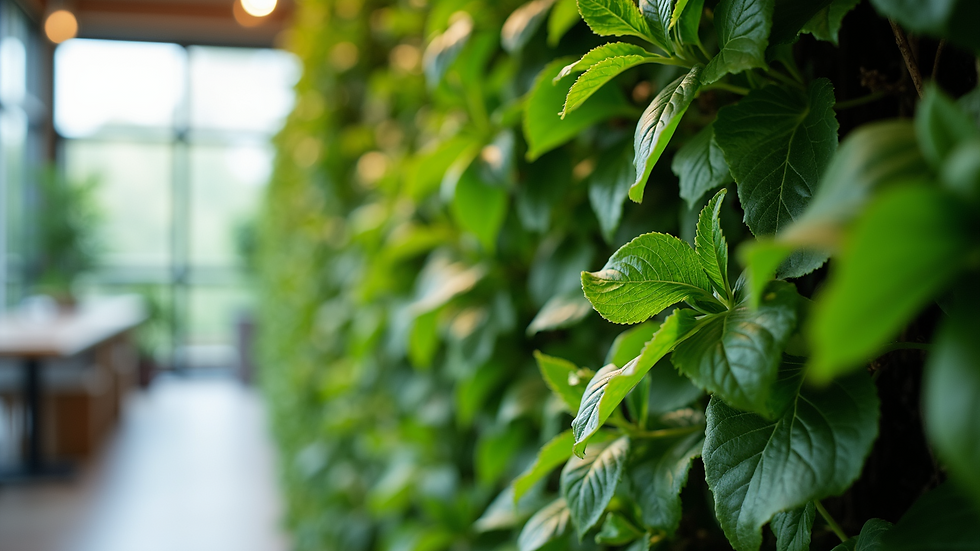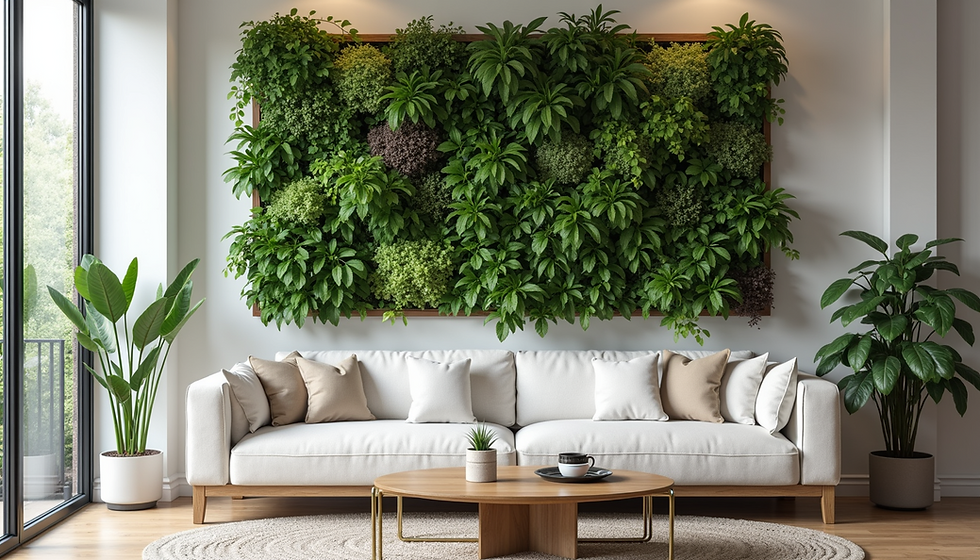Surprising benefits of vertical gardens
- Allian Omar Mejias Leiva
- Aug 19
- 3 min read
In recent years, urban spaces have seen a remarkable transformation with the rise of green architecture. Among the most innovative trends is the use of vertical gardens or green walls, which bring nature into cities in a unique and sustainable way. These living walls are not only visually stunning but also offer a wide range of environmental, economic, and health benefits. This article explores the ventajas de muros verdes and reveals some surprising advantages of incorporating jardines verticales into our living and working spaces.
How Green Walls Benefit the Environment—and Your City
Vertical gardens contribute significantly to improving urban environments. They help combat pollution, reduce the urban heat island effect, and promote biodiversity in densely populated areas.
Air purification: Plants in vertical gardens absorb carbon dioxide and release oxygen, improving air quality. They also trap dust and harmful pollutants, making the air cleaner and healthier.
Temperature regulation: Green walls act as natural insulators. They reduce the temperature of building surfaces by shading and evapotranspiration, which helps lower indoor temperatures and decreases the need for air conditioning.
Noise reduction: The layers of plants and soil absorb sound waves, reducing noise pollution in busy urban areas.
Biodiversity support: Vertical gardens provide habitats for birds, insects, and beneficial microorganisms, enhancing urban biodiversity.
These environmental benefits make vertical gardens a smart choice for cities aiming to become more sustainable and livable.

The Meaning Behind Living Walls
Beyond their practical uses, vertical gardens carry symbolic meanings that resonate with many people. They represent a connection between humans and nature, especially in urban settings where green spaces are limited.
Harmony with nature: Vertical gardens symbolize the integration of natural elements into human-made environments, promoting balance and coexistence.
Growth and renewal: The living walls remind us of growth, resilience, and the possibility of renewal even in challenging conditions.
Innovation and sustainability: They stand as icons of modern ecological design, showcasing how technology and nature can work together to create sustainable solutions.
Understanding these symbolic aspects can deepen our appreciation for vertical gardens and inspire more people to embrace green architecture.

Health & Personal Well-Being Benefits
Vertical gardens offer numerous health benefits that improve the quality of life for people who live or work near them.
Stress reduction: Exposure to greenery has been shown to lower stress levels and promote relaxation. Vertical gardens bring this calming effect into urban interiors and exteriors.
Improved air quality: Cleaner air reduces respiratory problems and allergies, contributing to better overall health.
Enhanced mood and productivity: Studies indicate that plants in workspaces can boost mood, creativity, and productivity.
Natural humidity control: Plants release moisture into the air, which can help maintain comfortable humidity levels indoors.
Incorporating vertical gardens into homes, offices, and public spaces can create healthier environments that support mental and physical well-being.

How to Install and Care for a Vertical Garden
Creating a vertical garden requires careful planning and maintenance to ensure its success and longevity.
Choose the right location: Consider sunlight exposure, wind, and accessibility for watering and maintenance.
Select suitable plants: Opt for species that thrive in vertical setups and local climate conditions. Succulents, ferns, and ivy are popular choices.
Use appropriate support structures: Modular panels, felt pockets, or hydroponic systems can be used depending on the design and budget.
Irrigation system: Automated drip irrigation helps maintain consistent moisture levels and reduces water waste.
Regular care: Prune plants, check for pests, and replace any unhealthy specimens to keep the garden vibrant.
By following these steps, anyone can enjoy the benefits of a thriving vertical garden.
Economic Impact & Added Property Value
Vertical gardens not only enhance aesthetics but also add economic value to properties.
Energy savings: By insulating buildings, green walls reduce heating and cooling costs.
Increased property value: Attractive green features can raise the market value of homes and commercial buildings.
Marketing advantage: Businesses with sustainable designs attract eco-conscious customers and improve their brand image.
Job creation: The installation and maintenance of vertical gardens generate employment opportunities in landscaping and horticulture sectors.
Investing in vertical gardens is a smart financial decision that combines environmental responsibility with economic benefits.



Comments